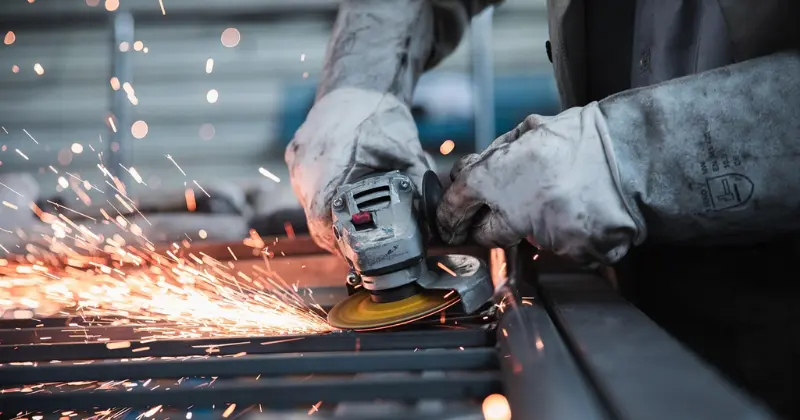10 mins read
What are Manufacturing Specifications? The Key to Developing Streamlined and Effective Spec Content

Specifications are widely used in the construction industry to complement drawings and other contract documents by providing additional technical details and clarifications. This also applies to the specifications provided by manufacturers and suppliers, as they help to support the flow of information on their products before, during, and after construction.
In this blog post, we explain manufacturer specifications, why they are needed, and how they are used in construction. We also provide some useful tips for creating more effective manufacturer specs.
What are Manufacturer Specifications?
Manufacturer specifications are a detailed document that outlines the technical details, performance requirements, and standards associated with a specific item or product. Manufacturer specs act as guidelines to ensure consistent quality and appropriate usage.
For the wide array of products, fixtures, and appliances built to support the construction industry, these manufacturing specifications provide an important input for construction architects, engineers, and contractors as they select appropriate items and verify they are used and installed correctly. The generation of clear, concise, and accurate specifications also helps to support effective procurement while meeting contract requirements for quality and safety.
What is a Manufacturing Spec Sheet?
In the construction industry, the terms manufacturer specification and manufacturing spec sheet are sometimes used interchangeably. However, specifications typically include all technical aspects of the product, including the engineering requirements and procedures followed to produce the item. Spec sheets are more condensed and primarily focus on areas of interest for procurement teams or downstream installers at the construction sites.
Spec sheets typically include details on dimensions, tolerances, and materials, along with diagrams and tables that make the information easier to follow. This condensed format is often helpful for contractors and subcontractors primarily interested in following proper installation or configuration instructions.
Key Manufacturer Specs Components
If you think of a manufacturing specification as an abbreviated guidebook that enables someone to use a product safely with no additional information, it is easier to understand the type of information that must be included and what can be excluded. Product design information, including raw material specifications and dimensions, is necessary for most products. Additional components of a complete specification include:
- Installation requirements define how a product should be integrated and used safely.
- Quality control measures, including in-process and final inspection steps, are used to ensure products are defect-free.
- Packaging details include the type of packaging materials used for storage and shipment, and instructions for proper product labeling.
A bill of materials (BOM) is another crucial specification element for products made up of many smaller parts. The BOM describes how many parts of each type are used and whether they are custom-made or off-the-shelf (OTS) items that can be easily replaced during installation.
Benefits of Manufacturing Specifications

Creating effective manufacturing specs brings benefits for the makers of the products as well as the customers who purchase, install, and use them. These benefits contribute to successful project outcomes, minimized delays, and satisfied clients.
Quality assurance
Quality assurance processes require complete standards and specifications that define acceptable and non-conforming products, and appropriate methods to guarantee accurate quality decisions are made repeatedly. All these factors must be considered to create a manufacturing specification that safeguards quality for suppliers and end users.
Cost efficiency
The connection between manufacturer specifications and construction cost planning and efficiency is not always obvious, but these specifications help to control costs by standardizing the ordering process and reducing the waste associated with materials that do not meet project requirements.
Regulatory compliance
Important safety, performance, and sustainability requirements are included in specifications to underscore how compliance to manufacturer specs often equates to regulatory compliance. The specifications serve as legally admissible evidence that appropriate requirements were met for each part, item, or material.
Safety
Specifications created by manufacturers explain how products are to be safely installed, handled and stored to protect the safety of workers on the construction site. This is especially important for products that include potentially hazardous or combustible materials, high voltage circuits, or sharp edges.
Better communication
Above all, manufacturing specifications are communication tools that allow everyone who selects, inspects, installs, or reviews construction products to fully understand the technical details of a product and how it is used. Standardized systems such as CSI MasterFormat support communication through specifications by establishing guidelines for content and document organization that make it easier to find information quickly.
Top 5 Tips for Effective Manufacturer Specs

The benefits of manufacturer specs can only be realized when they are written in a clear, concise, and unambiguous manner. Standard templates help to ensure the right content is covered, but taking some additional actions during the writing process ensures these specs are always accurate and effective.
1. Understand the audience
The construction personnel reading and reviewing manufacturer specs might range from technical experts to industry newcomers. It is essential for spec writers to create documents suitable for both ends of the spectrum—and everyone in between. This means including the required technical details while adding additional information as needed to make the requirements easier to understand. Consistent formatting also allows others to interpret new specifications quickly based on their understanding of previous releases.
2. Collaborate with peers
Even the best specification writers do not have all the information they need at their fingertips. They need to collaborate with team members in Engineering, Manufacturing, and other disciplines to be sure the information they have captured is accurate, complete, and current. The collaboration process might also uncover errors or information gaps that would lead to time-consuming updates and customer issues if not addressed early.
3. Consider different use cases
Each product is likely to have dozens of potential use cases that should be factored in when specifications are created. For example, plumbing, HVAC, and electrical products and fixtures might call for different installation practices and precautions depending on the size and type of structure they are used in, or the building codes and standards of each region. Safety precautions and recommended personal protective equipment (PPE) might also vary for each country and application.
4. Use the 3-part formula
The 3-part specification format defined by the Construction Specifications Institute (CSI) provides guidance on consistent content structuring. Following this established format, each specification should include a General Information section (part 1), a Product section (part 2), and an Execution section (part 3). The general section contains information like part numbers and product descriptions, while the product and execution sections ensure the technical details and installation information are documented accordingly.
5. Keep specifications updated
Each element of a complex construction project is subject to ongoing changes and updates, and manufacturer specs are no exception. The vendors who supply these products should maintain strict revision control so the products and the specifications that define them remain synchronized. Additional factors that make specification updates important include:
- Establishing baselines for incoming product inspection criteria
- Minimizing installation issues and delays caused by incorrect instructions
- Avoiding legal issues and contract disputes when products and specs diverge
What can Professional Manufacturer Specifications Software do for You?
Manufacturer specifications software simplifies complex specification writing, review, and integration tasks in the construction industry. RIB SpecLive is a comprehensive suite of software tools that empowers building product manufacturers to improve their specification quality and enhance their interactions with specifiers, architects, and engineers. This toolkit of purpose-built software solutions includes:
- SpecLive Assist: This tool simplifies custom product configuration by allowing engineers, architects, and other stakeholders to configure manufactured products based on their own unique design requirements. The powerful software is pre-integrated with manufactured assets so that product specifications can be selected and customized in just a few clicks.
- SpecLive Collaborate: Ongoing communication between spec reps, architects, and engineers during the writing and editing processes improves accuracy and efficiency while helping to differentiate products from the competition. This intuitive solution allows everyone to track and contribute to specification projects throughout the process.
- SpecLive Connect: A software module dedicated to spec integration ensures product specification data remains intact as the project evolves. SpecLive Connect links manufacturers with their customers directly so that information contained in websites and specification databases is seamlessly updated and transferred.
- SpecLive Influence: The marketing implications of high-quality manufacturer specifications cannot be overstated, so this solution is built to publish and position them for maximum value. Integrating specifications with the industry’s most trusted specification software, RIB SpecLink, enhances brand reputation and visibility.
- SpecLive Impact: A solution for spec reporting and lead generation rounds out the portfolio. SpecLive Impact helps manufacturers identify new opportunities to get specified while developing actionable leads that allow them to focus their time and resources more effectively.
Final Thoughts
As construction projects become more complex, detailed product specifications detailing all the necessary technical information are fundamental. Part of the process’s success relies mainly on collaboration between manufacturers and design teams, which can be ensured with professional digital specifications software. By embracing these tools, building product manufacturers can not only improve their visibility with architects and specifiers but also reduce risk, strengthen collaboration, and ultimately, increase the chances of being selected.
RIB SpecLive is a purpose-built software designed to improve the specification workflows of building product manufacturers, with powerful modules for increased accuracy, speed, visibility, and data-driven decisions.
If you want to improve the clarity of your manufacturing specs and ensure your products stand out during design decisions, get your free demo for RIB SpecLive today!
Book a Free Demo for RIB SpecLive
Most Recent
10 mins read
29 mins read
27 mins read
24 mins read
Blog Categories

Ebook











